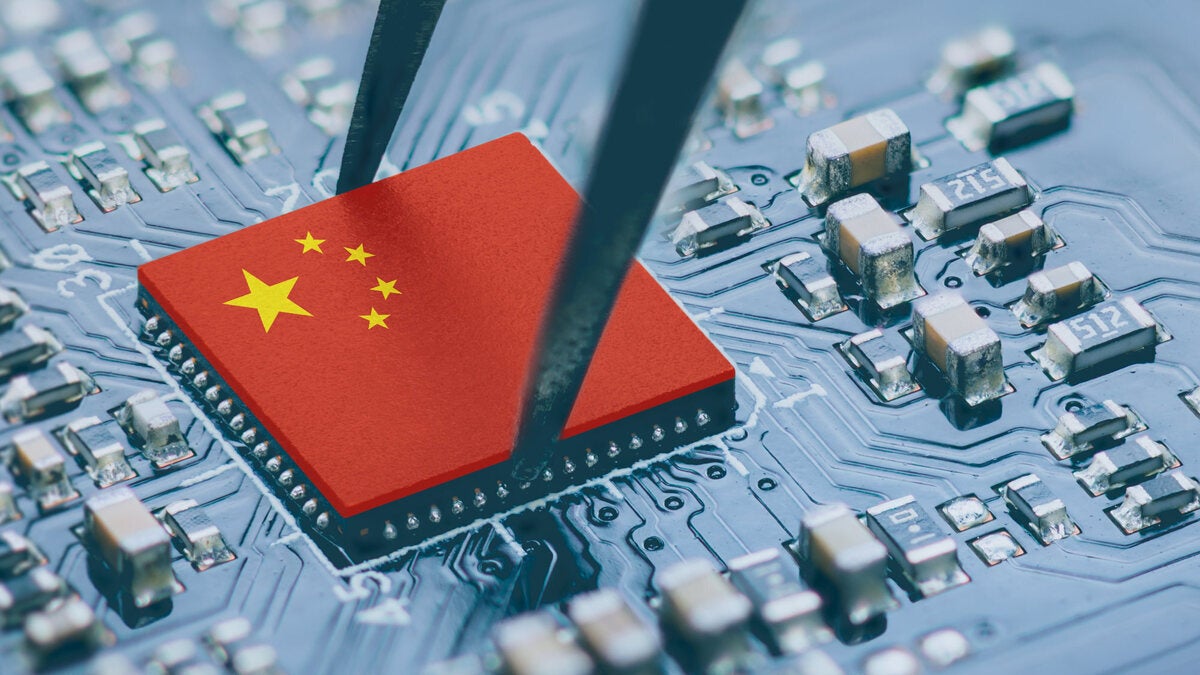US wins support from Japan and Netherlands to clip China’s chip industry
The countries have agreed to further restrict what chip-manufacturing equipment can be supplied to China.
img.feature-img
width: 100%;
height: auto;
The US has convinced two other countries to join it in expanding a ban on exports of chip-making technology to China, according to a report by Bloomberg. The move could cramp China’s home-grown chip industry as there are few, if any, other sources for the sophisticated technologies required for modern semiconductor manufacturing.
As part of a broader trade war with China, the US sought for its chip technology embargo from Japan and the Netherlands, where some of the world’s largest manufacturers of semiconductor manufacturing equipment are headquartered. It first imposed restrictions on exports of chips to China in 2015, extending them in 2021 and twice in 2022. The most recent restrictions were introduced in December.
It has already banned exports of artificial intelligence hardware, such as graphical processing units (GPUs), tensor processing units (TPUs) and other advanced application-specific integrated circuits (ASICS), and the latest extreme ultraviolet lithography (EUV) equipment used to make them, and the Dutch government has followed suit. The Netherlands is home to ASML, the only manufacturer of EUV tools.
The US has now persuaded the Netherlands and Japan join it in banning transfers of some slightly older deep ultraviolet lithography (DUV) equipment. ASML makes this too, while Japan is home to DUV equipment makers such as Canon, Nikon and Tokyo Electron Ltd., making the two countries key to the US plan to gnaw away at China’s dominance in the broader microchip market.
In contrast to newer chips such as the ones used in Apple’s latest iPhones, made using EUV machines, the larger, older microchips made with DUV equipment are mostly used across the auto and the industrial sector.
The three countries finally reached agreement on restrictions on the export of some DUV equipment on January 27, 2022, Bloomberg reported.
“This is a significant escalation as it goes from preventing China’s entry and progress in the high end to hindering its current semiconductor industry,” said Josep Bori, research director for thematic intelligence at analytics and consulting company GlobalData.
In October last year, the Biden administration had imposed restrictions on certain exports to China to reduce its capability to produce newer, smaller and smarter semiconductors.
These restrictions included an export ban on advanced computing chips and devices containing them, and certain semiconductor manufacturing items including extreme ultraviolet lithograph machines.
Then in mid-December, the administration expanded those restrictions to prevent an additional 36 Chinese institutions and chip makers from accessing US chip technology, including Yangtze Memory Technologies Corporation (YMTC), the largest contract chip maker in the world.
The ban on exports included restrictions on semiconductors used in artificial intelligence hardware, such as graphical processing units (GPUs), tensor processing units (TPUs) and other advanced application-specific integrated circuits (ASICS).
Discussions in camera
The combination of restrictions by the three nations could be the answer to US’s problems as the previous restrictions may not have been enough to thwart China’s plan to manufacture advanced chips tuned for artificial intelligence tasks, said Asif Anwar, executive director of global automotive practice at Strategy Analytics.
The support of Japan and the Netherlands may help the US stop China from fabricating more advanced semiconductors, Anwar added.
The discussions between the three countries were held in private, with no plans to announce the outcome, Bloomberg said. It cited sources saying the Netherlands will expand its restrictions on ASML Holdings in order to prevent the company from exporting some DUV lithography machines, crucial for industrial lines building electronic chips. Similarly, Japan will impose similar prohibitions on Nikon Corporation, the sources said.
Those companies are key, said Anwar of Strategy Analytics. “Companies such as ASML and Nikon can play a bigger role in ensuring that China doesn’t have the ability to domestically manufacture the more advanced chips that will enable the next stage of AI-based applications across IT/enterprise datacenters, autonomous vehicles, and other markets,” he said.
“Currently, the ASML CEO expects China sales in 2023 to remain steady despite restrictions and so this is limiting the effectiveness of US-based chip control policies,” Anwar added.
ASML reported revenue of €21.2 billion (US$22.7 billion) in 2022. China bought 14% of the systems it made.
Political pressure
The US seems to be using its political influence at the global level to draw nations such as the Netherlands and Japan to the discussion table, experts believe
“We do not believe ASML’s compliance with these bans is merely a matter of goodwill (and, ultimately, political pressure). The fact is that the US has full jurisdiction over ASML’s San Diego subsidiary Cymer—the sole intellectual property owner and manufacturer of a critical component, the laser produced plasma (LPP) EUV lithography light source—which means that Washington effectively holds the nuclear button,” said GlobalData’s Bori.
This also means that the US has the power to significantly disrupt ASML’s EUV business if it does not comply with the proposed wider export bans, Bori said.
Further, ASML’s management team has made public statements in recent weeks highlighting the uneven impact of the China export bans on ASML versus its US peers such as Applied Materials, KLA and Lam Research.
“Surely the Dutch government is sensitive to ASML’s claims and its own national interests, and difficult discussions taking into account the ongoing trade dispute, industrial strategy, national security and diplomatic relations must be going on during the private official meeting,” said Bori.
China’s response
Any new restrictions that arise from Japan and the Netherlands siding with the US could encourage the Chinese to look to other technologies and accelerate development of their own capabilities, Anwar said.
“So, for example, we should expect a move away from Intel x86 and ARM-based processors towards the RISC-V open standard instruction-set architecture to become a part of the solution that the Chinese companies develop,” he said.
This will in time put the international semiconductor supply base at a disadvantage because the Chinese industry will no longer be reliant on their technology, Anwar said, adding that it might even open up another competitive front.
“If those RISC-based solutions are accepted domestically as being fit-for-purpose, then they can also be sold to internationally to other countries.”
However, China has been struggling with its Made-in-China 2025 program, said G. Dan Hutcheson, vice chair at market research firm TechInsights.
Under the banner of Made-in-China 2025, the country had set itself a ten-year goal of making 70 percent of core materials in industrial products domestically by 2025—including semiconductors and semiconductor manufacturing equipment.
“As it has turned out, copying the equipment has proven much more difficult for China in comparison to Japan building its equipment industry in the 1970s,” said Hutcheson.
2023-01-31 15:00:04 US wins support from Japan and Netherlands to clip China’s chip industry
Post from www.computerworld.com Recently, the United States has won support from Japan and the Netherlands to put an end to China’s increasingly powerful chip industry.
China has been investing heavily in the chip industry in an attempt to reduce reliance on imports and bolster its technological capabilities. To prevent China from acquiring technologies that would reduce the presence of U.S. chip makers on the global stage, the United States, Japan, and the Netherlands have all joined forces to place industry standards and restrictions on chip production.
The U.S. and Japan have long been locked in an ongoing competition for dominance in the chip market. While U.S. chip companies have led the way for decades, in recent years China has rapidly gained ground thanks in part to government-funded initiatives that have made it a formidable competitor.
This has raised alarm bells in the U.S., as technology and information security experts have warned that Chinese-made chips could be vulnerable to cyberattacks if used in sensitive applications.
In response, the United States and its allies are working together to ensure that Chinese chip manufacturers adhere to established industry standards, including stringent requirements for intellectual property protection and disclosure of the underlying technology.
This is expected to be a major blow to China’s chip industry, as the country may be forced to scrap and redesign many of its designs at considerable cost. It remains to be seen, however, whether this will be enough to counter China’s rapidly advancing chip industry.
The United States’ alliance with Japan and the Netherlands is a clear sign of a new era in global trade and technology, one that puts an emphasis on collaboration rather than competition. It remains to be seen, however, whether this will be enough to curb China’s ambitions and keep the U.S. at the forefront of the global chip market.




















